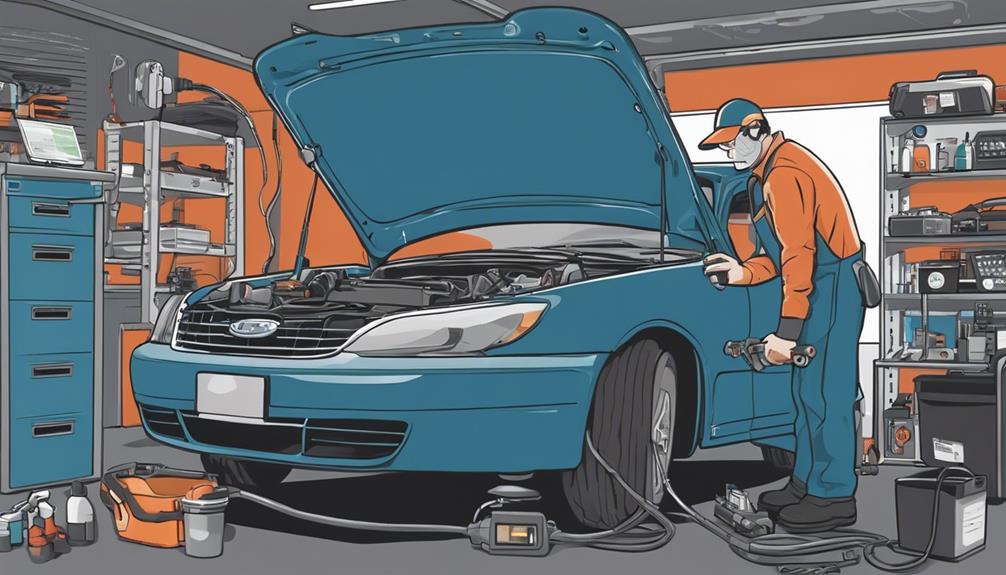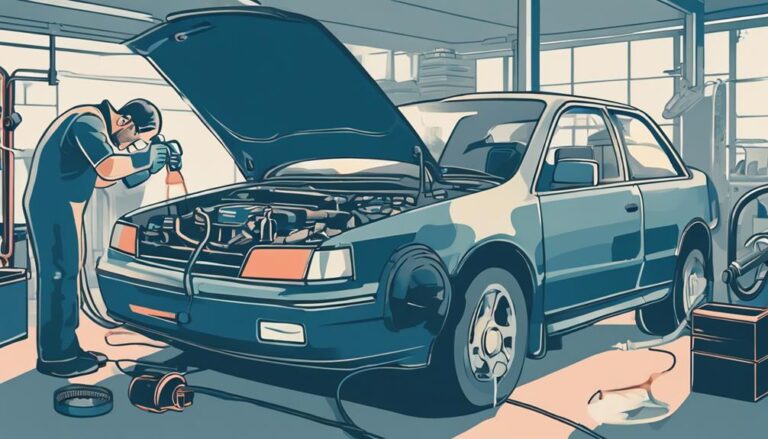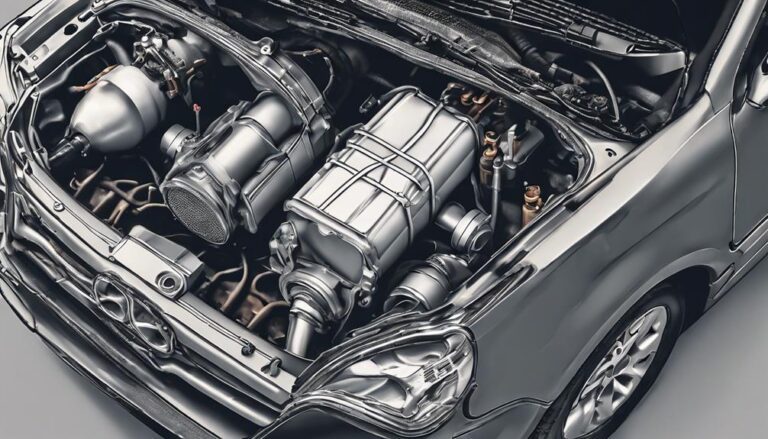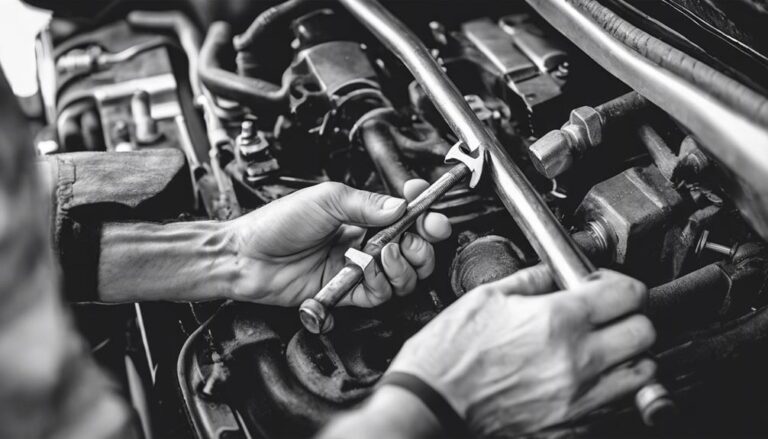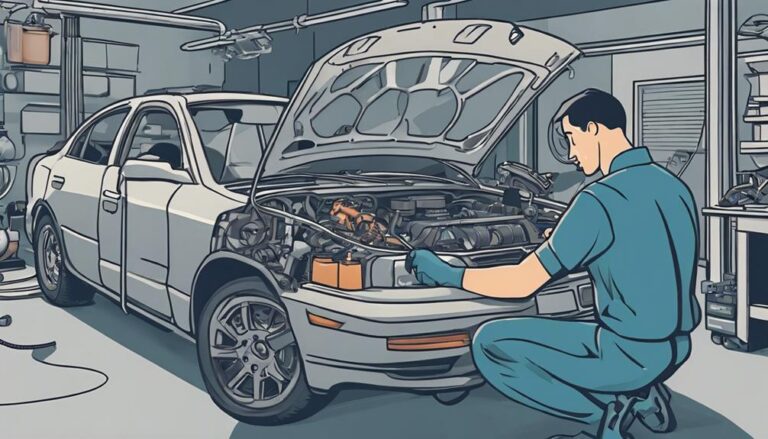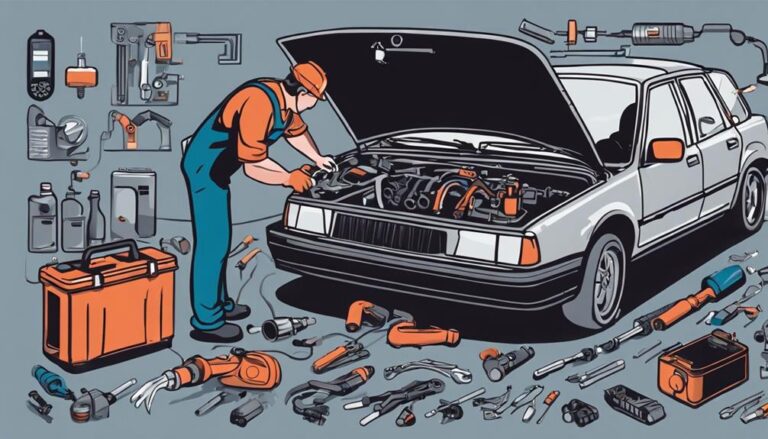Improving Performance: Repairing Faulty Emission Systems in Cars
You're driving down the road, enjoying the ride, when suddenly, a warning light flashes on your dashboard. Your emission system might be the culprit, affecting your car's performance.
But don't worry, there are steps you can take to address this issue efficiently and effectively.
Stay tuned to discover how repairing faulty emission systems in cars can not only enhance your vehicle's performance but also contribute to a cleaner environment and smoother driving experience.
Key Takeaways
- Restoring emission systems enhances vehicle performance and efficiency.
- Addressing faulty components prevents power loss and engine sputtering.
- Compliance with emission regulations avoids legal issues and costly repairs.
- Efficient fuel burning reduces emissions, promoting a cleaner environment.
Impact of Faulty Emission Systems on Performance
When faulty emission systems are present in a vehicle, they can greatly impact its performance and overall efficiency. Emissions play a vital role in the proper functioning of your vehicle's engine. Issues with emissions can lead to engine sputtering, causing power loss and hindering performance.
Fuel efficiency is also affected, resulting in more frequent stops for refueling and increased costs over time. Exhaust leaks stemming from faulty emission systems may manifest as unusual noises and vibrations, further detracting from the driving experience.
Additionally, electrical problems related to emission issues can trigger the Check Engine light, signaling potential performance issues that need attention. To maintain peak performance and prevent potential engine damage, it's essential to address and promptly repair any faults in the vehicle's emission systems.
Common Signs of Emission System Issues
Experiencing common signs of emission system issues in your vehicle can serve as important indicators that prompt the need for immediate attention and potential repair. The Check Engine light coming on is a primary signal of a possible emission system problem.
Engine sputtering or misfiring can also suggest issues within the emission system. If you notice decreased fuel efficiency in your car, it could indicate that the emission system isn't functioning as it should.
Unusual odors emanating from the exhaust may point towards underlying emission system problems. Additionally, loud noises originating from the exhaust system can be a red flag for potential emission system issues.
Paying attention to these signs in your car can help you detect and address emission system problems promptly, ensuring optimum performance and minimizing harmful emissions into the environment.
Diagnosing Emission System Problems
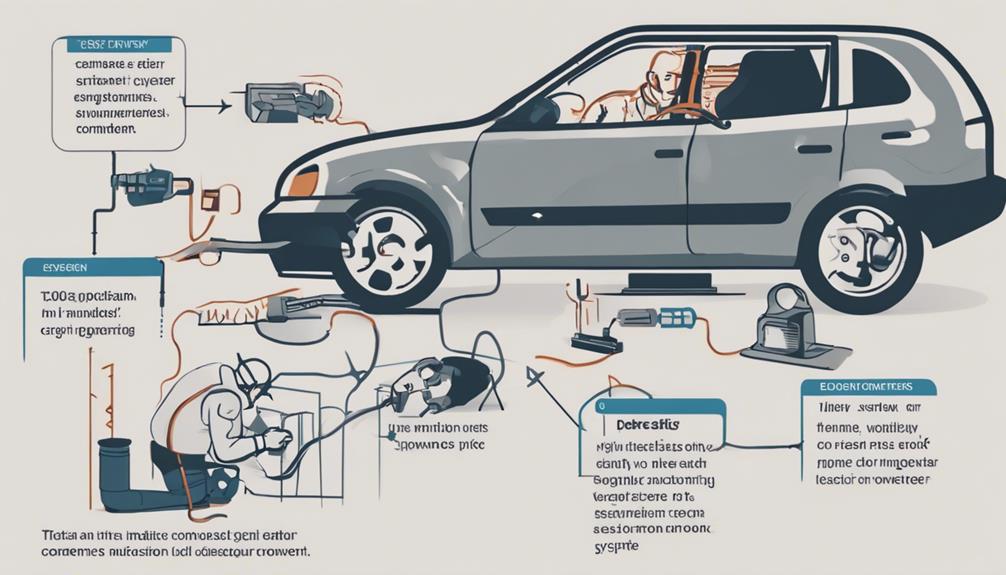
To diagnose emission system problems effectively, utilize an OBD-II scanner to retrieve error codes indicating specific component issues. When diagnosing emission problems, consider the following:
- Inspect Oxygen Sensors and Catalytic Converters: Check the functionality of these components as they're important for emission control. Faulty oxygen sensors or catalytic converters can lead to emission system malfunctions.
- Test the EGR Valve: The Exhaust Gas Recirculation valve plays a key role in emission control. Testing it can reveal issues affecting the vehicle's emission system performance.
- Check for Vacuum Leaks: Vacuum leaks can disrupt the proper functioning of emission system components. Identifying and fixing these leaks is essential for addressing emission problems effectively.
Repair Methods for Faulty Emission Systems
Inspecting and addressing common culprits such as a faulty gas cap and dirty air filter can be effective repair methods for faulty emission systems in vehicles. A damaged gas cap can lead to fuel vapor leaks, impacting both emissions and fuel efficiency. Replacing the cap with a new, properly sealing one can prevent these leaks.
Similarly, a dirty air filter can hinder engine performance and increase emissions output. By replacing the filter, you can improve engine efficiency and reduce harmful emissions. Faulty oxygen sensors are another key component to address as they guarantee accurate readings for proper emission control.
Ensuring the correct installation of all components is important to prevent further emission system issues. For complex problems, seeking expert help is advisable to guarantee lasting repairs and excellent emission system functionality. By addressing these repair methods diligently, you can contribute to both your vehicle's performance and environmental preservation.
Benefits of Restoring Emission System Functionality

Restoring emission system functionality greatly enhances vehicle performance and environmental impact. When your emission system is operating correctly, it guarantees that fuel is burned efficiently, leading to improved fuel efficiency. This not only saves you money on gas but also reduces your carbon footprint by minimizing harmful emissions released into the atmosphere. Additionally, addressing any emission system issues promptly can help prevent potential engine damage that may result in costly repairs down the line.
Maintaining your emission system in top condition also means that your vehicle is in compliance with emission regulations, shielding you from potential legal consequences. By investing in the restoration of your emission system functionality, you aren't only improving your vehicle's overall performance and reliability but also playing a part in creating a cleaner and healthier environment for everyone. Don't underestimate the impact that a well-functioning emission system can have on both your driving experience and the world around you.
Frequently Asked Questions
How Do You Fix Emission System Problems?
To fix emission system problems, you must first conduct an emission system diagnosis to identify issues. Common fixes include replacing a damaged gas cap, changing a dirty air filter, and installing new oxygen sensors. DIY repairs can help, but seek professional services for complex problems.
How Do You Fix Emissions Failure?
To fix emissions failure, diagnose issues with an OBD scanner, check for exhaust leaks, and clean carbon buildup. Replace faulty components like oxygen sensors or catalytic converters. Validate proper engine tune-up and use fuel additives if needed.
Can I Still Drive My Car if It Says Emissions System Problem?
You shouldn't drive with an emissions system problem. It can harm your engine and performance. Seek professional help promptly for safe driving. Temporary solutions may not address the issue completely. Neglecting it could lead to costly repairs and environmental impact.
How Can I Improve My Car Emissions?
To improve car emissions, focus on emission control, engine tuning, repairing exhaust leaks, optimizing fuel efficiency, replacing air filters, maintaining catalytic converters, reducing carbon footprint, undergoing emission testing, enhancing pollution control, and prioritizing vehicle maintenance.
Conclusion
Repairing faulty emission systems in cars is crucial for peak performance and reduced environmental impact. By addressing common issues promptly and accurately diagnosing problems, drivers can enhance fuel efficiency, prevent engine misfires, and extend the lifespan of their vehicles.
Taking proactive measures to maintain emission system functionality not only benefits the vehicle but also contributes to a cleaner and healthier environment. So, don't delay in fixing those emission system issues!

